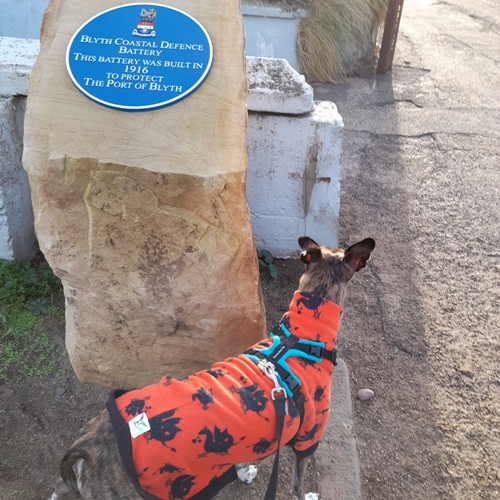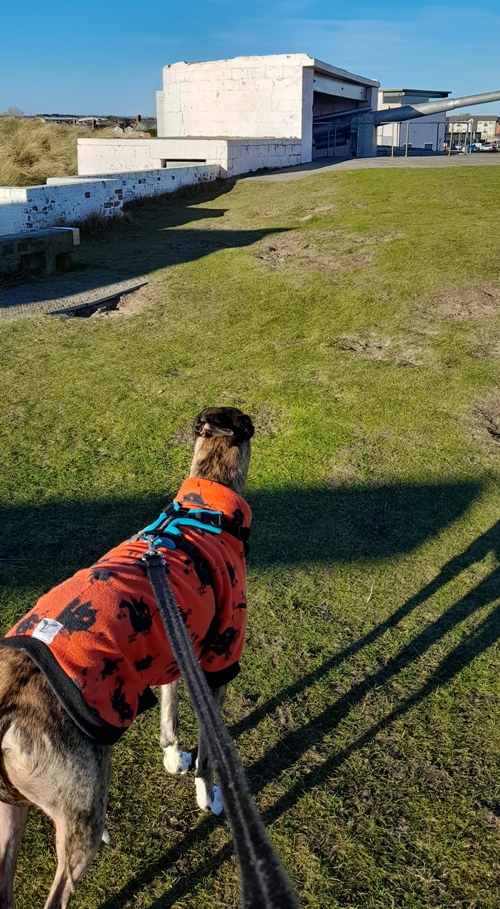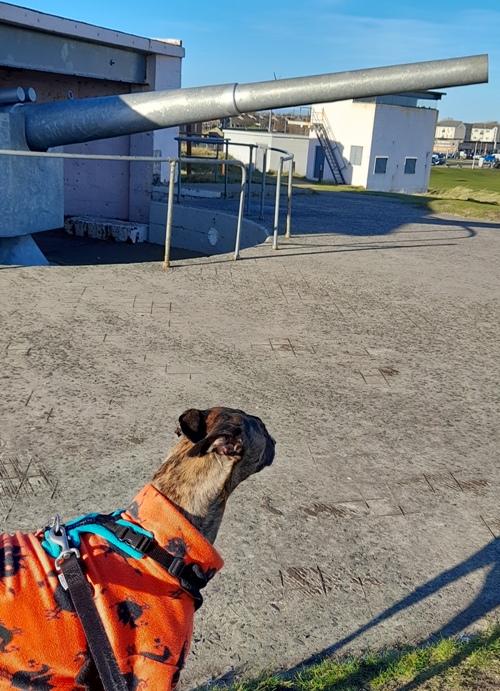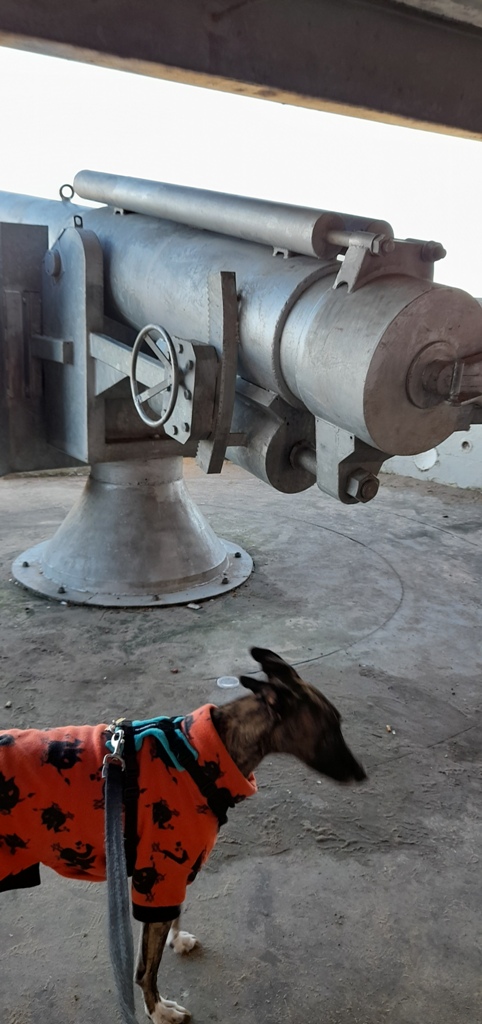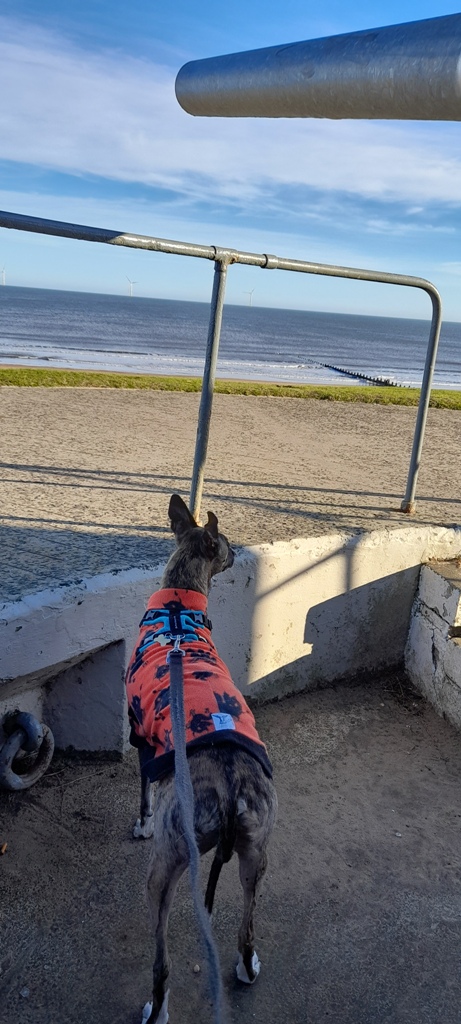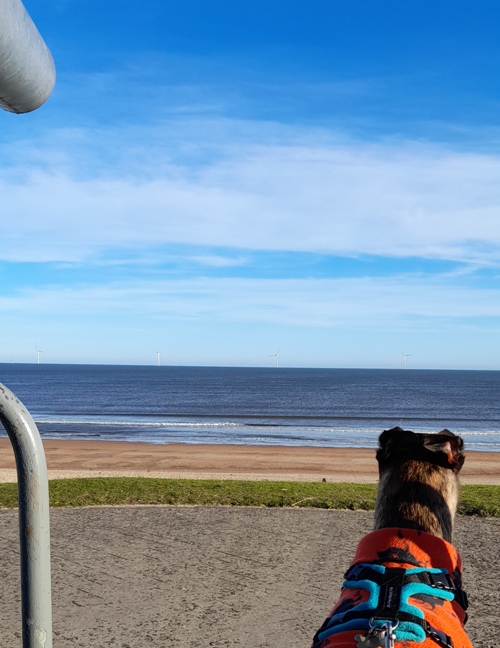Blyth Battery, Northumberland
Tigger's Tails - July 2022
At Blyth beach there are a few White buildings on the grassy area above the sand. I dragged my human over to explore what they were.
In response to Hartlepool being bombed by the Germans in 1914 (WW1 1914-1918), Blyth decided to build some costal defence.
It was originally built to prevent Germans landing along the coast, but by the time it was built in 1916 by the Durham Fortress Engineers, it was also used to protect the submarine support ship HMS Titania. As a submarine is very small a submarine support ship is important as it supports and supplies essential food, general supplies, torpedoes and holds the equipment for repairs. These can be provided out at sea or in ports.
During World War I, the Battery was manned by seventy-five men and four officers, who oversaw the operation of two six-inch quick-firing guns and two searchlights.
Blyth Battery was originally named Seaton Battery, it spanned the length of what is now the promenade at Blyth Beach and included several temporary and permanent enclosures.
In February 1940, the Battery was re-excavated, renamed Blyth Battery and within a month it was ready to protect the coast with two gun emplacements fitted with two six-inch BL MK.7 guns. Manned by 110 men and five officers from the 510 Coast Regiment (T.A.) and later the Home Guard, the 23 foot long guns had a range of 7 miles. It was placed in care and maintenance in November 1944. Seaward facing, each emplacement is fronted by a sloping apron of reinforced concrete.
Today the two gun emplacements, the engine house, its outbuilding and enclosing walls are listed Grade II and has been identified as one of only 28 examples of its type in England which have survived in a complete state. The fact that it was reused during World War II when some alterations were made, and a new Battery Observation post was constructed, adds to the importance of the monument as a whole.
Today Blyth Battery Museum is the most intact and includes:
WW1 Battery Observation Post
WW2 Battery Observation Post
Searchlight building
1st World War Officers Dugout
Royal Observer Corps monitoring post recreation behind the gun emplacements
Two replica Mark VII 6" naval guns (23 feet long)
Memorabilia from both world wars
Tea, coffee, sandwiches and cake available from a restored war shelter
Blyth Battery also runs several events throughout the year including re-enactment events.